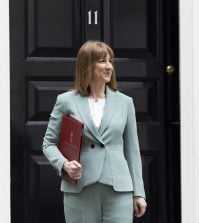Understanding choices, shaping citizens

How do governments help citizens make better choices? Behavioural insights can help, as Graham Scott discovers
If there’s one thing that can be said with certainty about human beings, it is that they are complex creatures. Yet various human sciences have tried for years to understand them better, and their insights have long been used to shape public policy.
One of the most recent examples of this process is associated with behavioural economics. This combines economics with psychology in an attempt to understand, and more significantly influence, human choices.
Shifting perceptions
Behavioural economics represents a massive shift in our understanding of the human mind. Whereas previously, we were assumed to be rational beings, capable of making well-reasoned choices, this new approach operates with a more nuanced understanding of the ways in which we decide how to act.
To give an example, according to the so-called rational choice theory, if you pointed out to people that smoking kills, they’d stop smoking. As it happens, the failure of this very strategy to reduce smoking is an indication of the limitations of traditional understandings of human behaviour.
In their place has come behavioural economics. Using its insights, government bodies have been able to explore other ways of discouraging people from smoking, such as increasing tax, highlighting the damage to health, or pointing out that it’s not glamorous to smoke.
The benefits of using behavioural economics include the ability to road test campaigns in order to see whether a particular slogan or approach yields the desired results. This means that governments can try a number of strategies out with users, then hone in on the one that proves to be most effective. It’s a much more dynamic approach to policy implementation, meaning that governments can flex in response to citizen behaviour.
Leading the way
Australia is one of many countries exploring this field, with public health as one of the largest battlegrounds.
For example, in a White Paper of February 2014, AIA Australia points to the costs of the country’s three most common Non Communicable Diseases. Obesity, smoking and harmful drinking cost the government around AUS$6bn a year. Moreover, as the 47 per cent rise in obesity between 1995 and 2012 indicates, they are problems that are worsening for the country.
The report points to the irrationality of many consumers who can’t make objective, weighted decisions about their wellbeing, such as stopping smoking or reducing their calorific intake for the sake of their health.
To counter this, the report suggests that “nudges” like financial incentives provide a way to change behaviour. This will be the case, the authors argue, particularly if the incentive is small, frequently provided and delivered soon after the activity the government is seeking to discourage.
These nudges can be taken further. In ‘Influencing Consumer Behaviour: Improving Regulatory Design’, the Australian Government’s Department of Finance and Deregulation gives three categories of intervention:
Pure Nudge: This often simple nudge changes the choice architecture facing decision makers, which can have a significant impact on their responses. An example is pre-filling Australian Tax Office forms, so that a citizen’s information is already partly in place when they receive it. That makes it easier, and quicker, for them to complete.
Assisted Nudge: This involves regulating firms to change their choice architecture, thus limiting the choices available to consumers. For example, a government might require businesses to disclose certain information in a certain way on packaging or in their advertising. This information would then influence consumers’ buying decisions, either to drive sales or discourage them.
Shove: As the name implies, this is more of a direct intervention, regulating both businesses and consumers. A high-profile example is banning smoking from both public and commercial premises.
Exploring the limits
At first glance nudge seems like a simple way to influence the public benignly, and there looks to be a strong case to make more widespread use of it in shaping and implementing policy.
While many governments have already started down this track, there is a note of caution to be sounded.
As Nick Chater, a psychologist at Warwick Business School, says: “The brain is the most rational thing in the universe. But the way it solves problems is ad hoc and very local.” In other words, any general laws of human behaviour can only be a rough guide, whether they are born from behavioural economics or some other human science.
A corollary of this insight is that legislators and behavioural economists carry their own prejudices and irrationalities, which influence the theories and policy recommendations they put forward. So the potential for bias needs to be factored in before any policy intervention is pursued on the basis of nudge or related understandings of human decision making – not least because the risk of bias is something that behavioural economics itself clearly identifies.
Ultimately, we’re all humans, and even behavioural economists are not immune from bouts of irrationality. To give an example, consider the Behavioural Exchange conference being held in Sydney this June. On the page where you can buy a ticket to the event it states ‘Tickets are selling fast, don’t miss out’.
That’s a classic example of nudge, in which social proof is being used to promote an event discussing, among other things, the role of social proof in shaping perceptions. But then again, who would expect anything less?
























